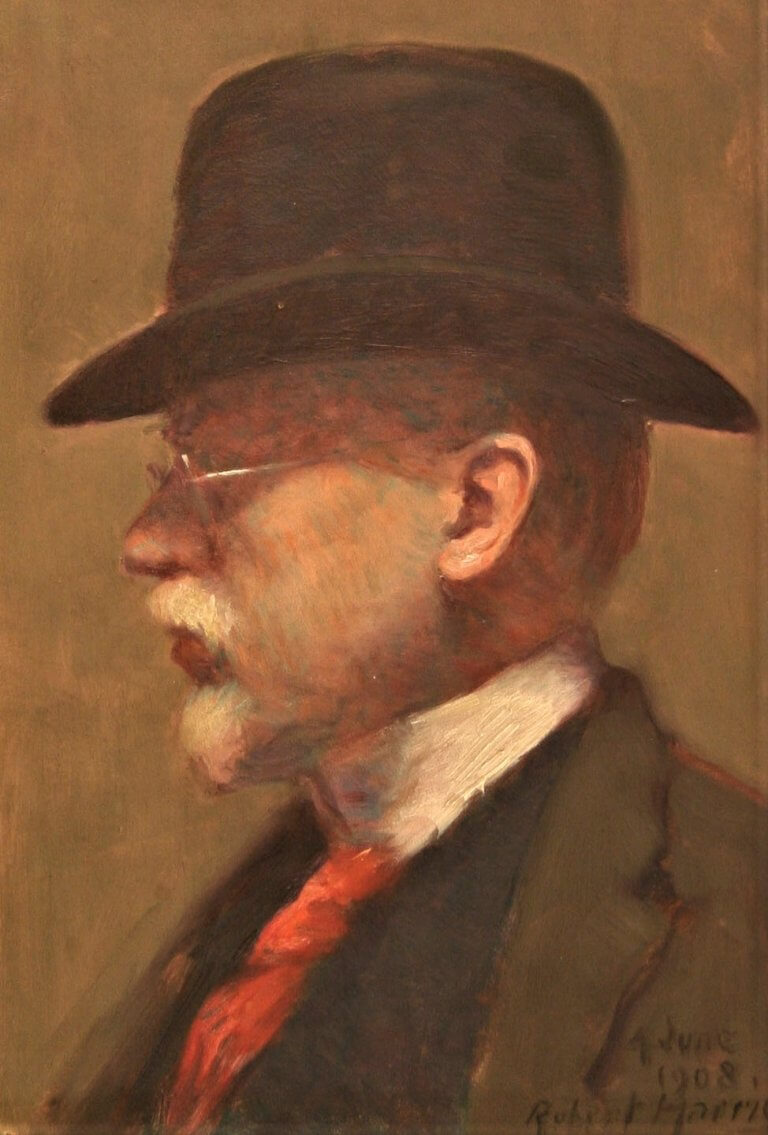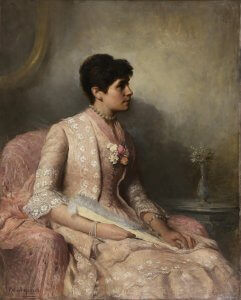
A Life’s Work: Canadian Artist Robert Harris (1849-1919)


Selected primarily from the extensive Robert Harris Collection and Archive at Confederation Centre Art Gallery, this exhibition is intended to provide visitors with an overview of Harris’ prolific career. It ranges from youthful works made in Charlottetown, to artworks created during his international studies and travels, to examples of the portraits commissioned by business leaders or affluent families. He made his first trip to England and Wales as an 18-year-old; several trips to study in Boston, London, and Paris followed, and after his marriage in 1885 to Elizabeth (Bessie) Putnam, the couple continued to travel abroad often visiting the great art museums, sketching and painting, attending concerts, lectures, and church services. Throughout his life Harris remained in close contact with family in Prince Edward Island and often spent summers visiting.
A Life’s Work is presented in two galleries. The Sobey Gallery focuses on Harris’ early watercolours, life drawings of nude models and people engaged in daily activities—including several scenes related to the fishery intended for print illustrations. His preliminary drawings for portraits or genre works, as well as sketchbooks, photographs, letters, and memorabilia are also included. Harris was a keen observer of people and places and his early maps and views of Charlottetown show this clearly. They are a charming glimpse of the town in the mid-1860s to early 1870s and are the starting point for this exhibition as they reveal his clear intent to become an artist.
The oil paintings—the formal portraits, genre, and landscape subjects have evolving styles and interests over the span of his career and are hung in loose chronology in the gallery directly above the drawings. Commissioned portraits include local merchant Owen Connolly and his wife Ann, 1879; Henry Jones Cundall, 1879, the surveyor and land agent who employed Harris as a teenager; Sir Hugh Allan, 1885, founder of the Allan Steamship Line (Collection of the National Gallery of Canada); and Anna Leonowens, 1905, co-founder of what is now NSCAD University. Also included are portraits of Harris’ siblings and parents, and several of his beloved wife, including Portrait of Bessie in Her Wedding Gown, 1885, and the 1901 portrait of Bessie that was awarded a gold medal at the 1901 Pan-American Exposition held in Buffalo, New York.

Paintings of everyday life range from Ante-room of the Atelier Bonnat, Paris, 1882, with its brilliant brushwork and dramatic lighting, to The Local Stars, 1888, capturing the complex interpersonal dynamics among choir members, to Sands of Dee, 1892. Small landscape panels painted during overseas travels and summer destinations in Canada and New England reveal a continuing interest in atmospheric landscape. Charlottetown Seen from the North River, 1903, is the largest Island landscape and On Gloucester Bay, circa 1908, shows Harris enthralled with the effect of light glistening on water, and is based on small field sketches.
Through study, determination, and talent, Harris’ achievements and art hold a significant place in Canadian art history no matter if his work has, like so many artists, fallen in and out of the public consciousness. His distinctions include being named among the first members of the Royal Canadian Academy of the Arts (RCA) in 1880; thirteen years as RCA president advocating with government ministers for support for Canadian artists; exhibited in the annual exhibition of the Art Association of Montreal; and the awards and medals for his painting and distinguished service to the arts remain an impressive achievement for any artist—let alone this early Canadian artist who called Prince Edward Island home.
Kevin Rice, Curator
